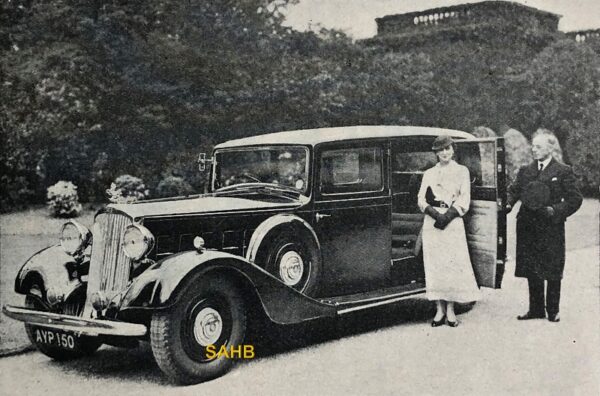
The Humber Pullman four-door limousine was first introduced in 1930. It was the successor to the Humber 20/65 hp and was launched at the same time as its shorter-wheelbase sister car the Humber Snipe.
The 1930 car came with a 3,498cc straight-six overhead-inlet-side-exhaust engine and a claimed power output of 80bhp. The classic limousine-style body featured rear-hinged doors front and rear and in some respects resembled the Humber Snipe 80 with which it shared its engine, but the Pullman was longer and wider. For this heavy car Humber claimed a top speed of 73mph. As well as the limousine, Humber offered Landaulette and Sedanca de Ville bodies.
Humber lost its independence in 1931 when the Rootes Group acquired a majority shareholding in it. A coupé was added to the body range in 1935 for one year only.
In 1936 the Pullman was rebodied with a two-piece V windscreen, sharing the 132-inch wheelbase of the earlier car but with the overall length of the body increased to 196 inches. Engine size was now raised to 4,086cc while claimed power was 100bhp and top speed had climbed to a heady 75mph.
Pullmans were not available to the civilian public during World War II, since the factory went over to the production of the ‘Ironside’ reconnaissance car. However, production of the newly introduced “razor-edge” Pullman continued throughout the war for the government and the military. The Pullman returned to the market in 1945 and remained in production until 1954.
The Pullman was popular with government ministers and even royalty: our Snapshot shows H. H. Princess Marina about to step into a Pullman. Princess Marina, Duchess of Kent, was born Princess Marina of Greece and Denmark, and was a daughter of Prince Nicholas of Greece and Denmark and Grand Duchess Elena Vladimirovna of Russia, and a granddaughter of King George I and Queen Olga of Greece. She married Prince George, Duke of Kent, fourth son of King George V and Queen Mary, in 1934. The wedding was the first royal wedding ceremony to be broadcast by wireless. Marina was widowed in 1942, when her husband was killed in a plane crash on active service.
Another eminent user of a 1934 Humber Pullman was Sir Isaac Isaacs, the Governor-General of Australia from 1931 to 1936. He was the first Australian-born holder of the office. The Humber Pullman may be thought of as an upmarket car, but interestingly Sir Isaac was popular with the public throughout his five-year term for his frugality during the Depression. So perhaps the Humber was the perfect car in these difficult times: distinguished enough for royalty or those in high office, but not overly patrician.
Image courtesy of The Richard Roberts Archive: www.richardrobertsarchive.org.uk







Leave a Comment